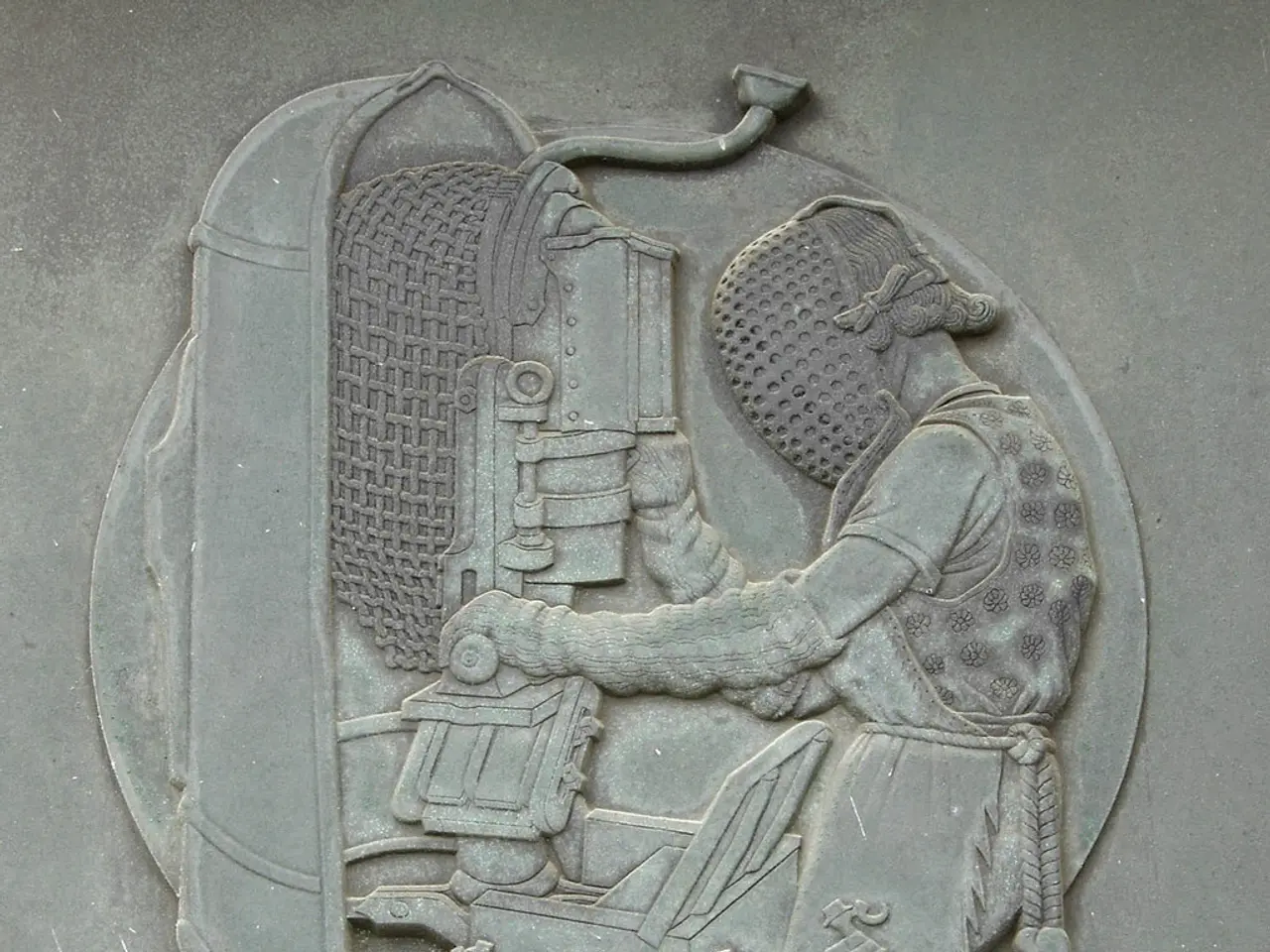Neanderthals Demonstrate Skill in Precision Striking, According to Recent Research
In a groundbreaking study, researchers have shed new light on the cognitive abilities of Neanderthals, a species long believed to have possessed advanced skills in stoneworking. The focus of this research was the Levallois technique, a method of stoneworking that was previously considered a sign of foresight and linked to cognitive abilities.
The experiment involved creating 20 stone cores, which were then shaped with precision milling machines and subjected to controlled strikes at three different angles using automated hammering devices. The results were striking: The influence of the striking angle was found to be significant in the Levallois technique.
The study revealed that the flatter the striking angle, the larger, thicker, and heavier the resulting flake. Conversely, steeper angles produced thinner, narrower forms. This deliberate control of the striking angle is indeed considered a sign of advanced cognitive skills and foresight. It requires planning and precise execution to shape cores and produce predictably shaped flakes, reflecting intentionality and sophisticated motor skills.
The Levallois technique, which involves preparing a core with a carefully constructed striking platform and removing flakes with a controlled angle of blow to produce tools of predetermined shape and function, is more than just manual dexterity. It implies cognitive abilities such as abstract thinking and future-oriented planning, as the knapper must anticipate the shape and size of the resulting flake before striking it.
The new study also challenges the assumption that the geometry and hardness of the stone core mainly determine the shape of the removed flakes. The researchers found that the type of fracture also changed based on the striking angle: Flatter impacts created deeper cracks that removed more material from the core, while oblique impacts resulted in more superficial fracture paths.
The results were further analysed using high-resolution 3D scans and cross-section analyses. The study underscores the sophistication of the Levallois technique, a method that was used 200,000 to 400,000 years ago in Africa, Europe, and Asia. The study's findings are in line with the broader scholarly consensus, which supports that such controlled knapping reflects advanced cognition and foresight in Neanderthals.
In summary, the deliberate striking angle control in the Levallois technique is widely interpreted as evidence of Neanderthals' advanced cognitive capabilities and their capacity for foresight in tool production. This study adds to the growing body of evidence suggesting that Neanderthals were more intelligent and skilled than previously thought.
The deliberate control of striking angles in the Levallois technique highlights the use of technology for shaping stone cores, suggesting that Neanderthals possessed advanced cognitive skills in science and technology. The findings of this study underline the significance of this method in the understanding of Neanderthals' medical-conditions, as it implies their capacity for future-oriented planning and abstract thinking.




